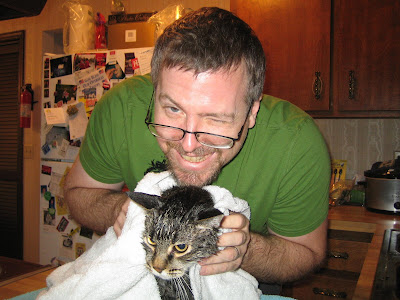"POSTMODERN" TECHNIQUE IN FANTASY FICTION
I've already established in a prior blog post that I believe all fiction is fantasy in a sense. As a result, all fiction is "escapist" in a sense--there are simply varying degrees of escapism. The importance of this distinction, to me, is not to buy into the untruth ("lie" is perhaps too harsh a word in this context) that any writer of fiction is not being "escapist" in some way. For one thing, it allows us to see the worth of truly escapist fiction by allowing it to exist in the same continuum, within the same spectrum. "Escapist" should not be a pejorative, in other words. Fiction can fail in so many ways that to focus on "too much escapism" strikes me as a convenient way to overlook defects in "non-escapist" fantasy, for example.
But what I really want to discuss in this post is how postmodern techniques in fantasy fiction often actually supports the "fantasy" element, if we, for purposes of this discussion, define "fantasy" as "containing non-real-world elements"--a non-Earth Prime setting, for example. I'll use my own "fantastical" setting of Ambergris for purposes of illustration. My "mosaic novel" or short story collection City of Saints contains quite a bit of postmodern technique, applied with varying degrees of depth. Most of it serves to support the reality of the fantasy setting--"King Squid" and "The Early History of Ambergris," for example, use the structure of nonfiction forms for fictional purposes. In "Early History" the "fictional purpose" is to present a history of Ambergris without the need for the traditional methods of plot and character development. This device strengthens the conceit of Ambergris being real, rather than in any way disabusing the reader of his or her suspension of disbelief.
In "King Squid," the structure used is that of the scientific monograph. "King Squid" sets out the delusions of a supposed resident of Ambergris--in other words, most everything set out in the monograph is false to the supposed "truth" (or Reality2) of Ambergris ("our world" being Reality1). In a sense, the structure of "King Squid" allows the narrator his delusions but denies him the escape one might expect is inherent in a "fantasy" setting. Its effect on the reader is to uphold the reality of Ambergris because the reader is forced to conclude that the "facts" about Ambergris set out in the piece are either distorted or untrue--in a sense, it forces the reader to consider Ambergris as real and the "King Squid" story as false.
Other postmodern techniques I use do, in fact, breach the wall between author and reader, and expose the "lie" of suspension of disbelief. More on them later. My main point here, I suppose, in what has become a somewhat rambling yet truncated post that will probably require revision, is that a postmodern technique used in a "fantastical setting" often supports the milieu, even if those same techniques used with a modern-day setting can seem artificial or distracting from the reality of place.
JeffV



0 Comments:
Post a Comment
<< Home